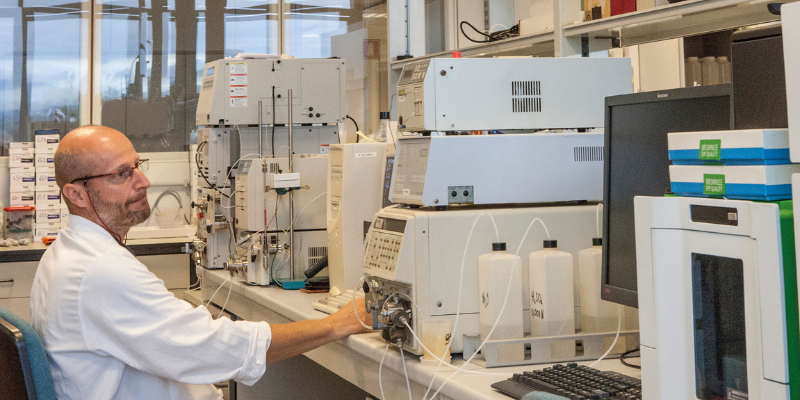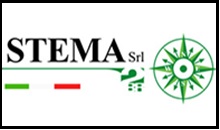Since 24 August, the rules of the game have changed: the reduction of diisocyanates to within 0.1 percent may require fine-tuning in the edging and coating processes.
“One of the first assignments I was given when I first arrived at Catas, in 1987, was precisely research work on the presence of diisocyanates in polyurethane paint catalysts, because there was clear evidence of several cases of bronchial asthma linked to inhalation in painting processes. Much has been done in recent years, reducing their content and designing and implementing technological solutions that are increasingly attentive to the healthiness of the workplace: pathologies are certainly less frequent, but we must not underestimate the fact that workers in our sector still have to deal with substances that can create sensitivity to specific pathologies“.
This is how our conversation with Franco Bulian, director of Catas, begins. We asked him to explain to us what the new European regulation – in force since 24 August 2023 – means for our sector, which requires us to check that the hardeners (the so-called catalysts) of polyurethane and acrylic paints and also of some used in combination with water-based paints do not contain more than 0.1 percent free diisocyanate monomers.
“An issue that also involves users of polyurethane, or rather polysocyanate, hotmelt adhesives in edging and coating processes, who will have to pay attention to this indication. In addition to paints, the flooring industry will also have to check polyurethane adhesives and certain types of primers used as screed consolidants. Should the declared values exceed the 0.1 percent threshold, appropriate training on the use of products containing diisocyanates will be required, as stipulated in the European regulation. And this seems to me to be a very important step, because it clearly shows how in the future there will be an increasing need for competence, for personnel who are adequately trained, who know every potential implication of their work, who can handle every step, every piece of equipment, every material in the utmost safety, knowing the potential risks for people and the environment“.
The solutions?
“To use products that have a very low content of these free diisocyanates, less than 0.1 percent, ready to define any ‘new standards’ in terms of both application and performance of the final product, because we are talking about different substances with different characteristics and performance. I believe it is also imperative for technology manufacturers to pay the utmost attention to these new limits, checking whether it is necessary to intervene in the work cycles of their machines and plants that will have to work with a different chemistry…
I am sure they have moved in good time, because we are talking about a measure whose process started in 2016 with an initial report from the German authorities to the European Chemicals Agency (Echa). The data collected had identified more than five thousand new cases per year of occupational diseases due to exposure to diisocyanates throughout the European Union.
On the basis of this evidence, the restriction measure was adopted in 2020 with the publication of Regulation 1149 by the European Commission, issued under the ‘Reach’ regulation, the process of registration, evaluation, authorisation and restriction of chemicals that aims to improve the protection of human health and the environment from potential risks due to chemicals”.

Hardly a bolt out of the blue….
“Far from it: free diisocyanates have always been under the attention of occupational hygiene agencies for the negative effects they can cause when they penetrate the human body. Considering the wood and furniture sector, the main route of potential occupational exposure is inhalation, especially in the case of areosols when, for example, paints containing free diisocyanates are applied using spray systems. More limited, on the other hand, is the risk of exposure to diisocyanate vapours, given the low tendency of these substances to evaporate. Obviously, the risk must be assessed on a case-by-case basis considering all the boundary conditions.
It is worth remembering that workers’ exposure can also occur through skin contact, which can happen especially in the flooring installation sector where the application is carried out by manually trowelling the adhesive onto the cement substrate. We are talking about powerful irritants to the eyes and respiratory system: even direct skin contact can cause marked skin inflammation. Respiratory irritation can also progress into acute or chronic respiratory diseases“.
What are diisocyanates?
Diisocyanates are a particular group of chemicals characterised by high reactivity with other substances to generate new compounds. The reactivity of diisocyanates is actually dual (the prefix ‘di’ indicates precisely this dual functionality), a property that allows the diisocyanate molecule to simultaneously bind to two molecules of other substances to generate molecular aggregates that can become very large and complex.
The most common diisocyanates are toluene diisocyanate (TDI), methylene bisphenyl isocyanate (MDI) and hexamethylenediisocyanate (HDI), which are widely used mainly in the production of polyurethane derivatives such as foams, plastics, adhesives, paints and primers for various applications.
Diisocyanates are present in some types of hardeners for paints and adhesives (often referred to as catalysts), in hot-melt polyurethane adhesives used in edging or coating, in single-component polyurethane adhesives for the parquet laying industry and in some types of primers sometimes classified as hygro-hardeners.
catas.com














